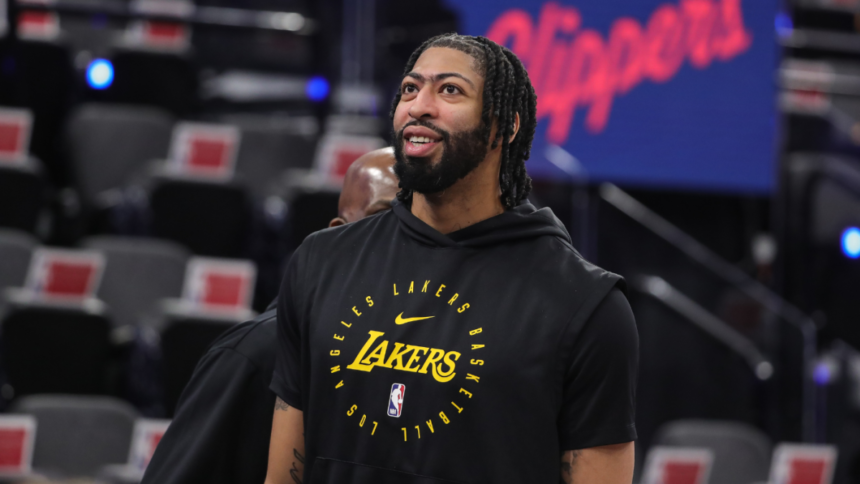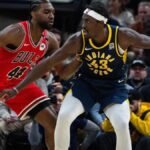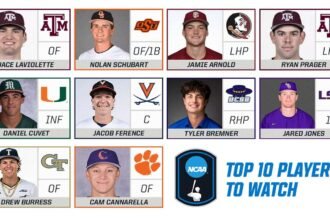In July 2019, at Anthony Davis‘ first press conference as a member of the Los Angeles Lakers, the star big man said, “I’m not even going to sugarcoat it: I like the 4, I don’t really like playing the 5.” Los Angeles general manager Rob Pelinka, seated next to Davis, said that playing Davis at center and “having him bang against the biggest centers in the West every night is not what’s best for his body, or for our team or the franchise.”
At that point, the Lakers had already signed JaVale McGee and DeMarcus Cousins. In August, they would sign Dwight Howard. They went on to win the championship that season, and while he has mostly manned the middle in recent years, Davis has pined to play what he considers his natural position.
“I think we need another big,” he told ESPN’s Shams Charania two weeks ago. “I feel like I’ve always been at my best when I’ve been a 4 and having a big out there. We know it worked when we won the championship with JaVale and Dwight at the 5 and I’m at the 4.”
Los Angeles didn’t get another big, but Davis did. The most shocking trade in the history of trades has landed him with the Dallas Mavericks, who already employ not one but two starting-caliber centers: Dereck Lively II and Daniel Gafford. Lively is currently out of the lineup because of an ankle injury, but, unless he or Gafford is traded before Thursday’s deadline, there won’t be many center minutes available for Davis when they’re at full strength.
“Anthony’s probably going to finish games at the 5, but you’re going to see those guys play together,” Dallas general manager Nico Harrison told the Dallas Morning News’ Brad Townsend on Sunday. “And when Lakers won, he played the 4.”
Davis and Harrison are correct that, when Los Angeles won the 2020 title, Davis — who could make his Mavericks debut Tuesday night against the 76ers — primarily started at power forward next to a traditional center. But did the Lakers win the title because of that configuration or in spite of it?
Was Anthony Davis really at his best at the 4?
The 2020 Lakers were a big, imposing, physical team with an elite defense, but there were trade-offs. They had a clunky halfcourt offense, and they were a well below-average 3-point-shooting team in terms of both volume and accuracy. In the playoffs, they were much more efficient, largely because Davis made his jump shots — from both 2- and 3-point range — at a much higher clip than at any other point in his career. And even with him on a heater, he continually found himself at the 5 spot for the sake of speed and spacing.
Los Angeles removed McGee and Howard from the rotation against the small-ball Houston Rockets in the second round, and their minutes varied wildly against the Denver Nuggets in the conference finals. McGee didn’t log a single minute against the Miami Heat in the Finals, and Howard logged a total of 71, which ranked ninth on the team (and was 57 fewer than Markieff Morris‘ total). In the clincher, Los Angeles benched Howard for Alex Caruso and he logged just one minute in garbage time.
The remainder of Davis’ tenure with the Lakers suggests that when he’s at the 4 he is not, in fact, at his best (or at least his team isn’t at its best). With the exception of the brief time he spent sharing the frontcourt with Marc Gasol, whose shooting and passing abilities opened up the offense, the spacing issues were so severe that the team eventually abandoned it.
Luka Doncic trade: Four lingering questions about Lakers, Mavericks, Jimmy Butler, Kyrie Irving and more
Sam Quinn
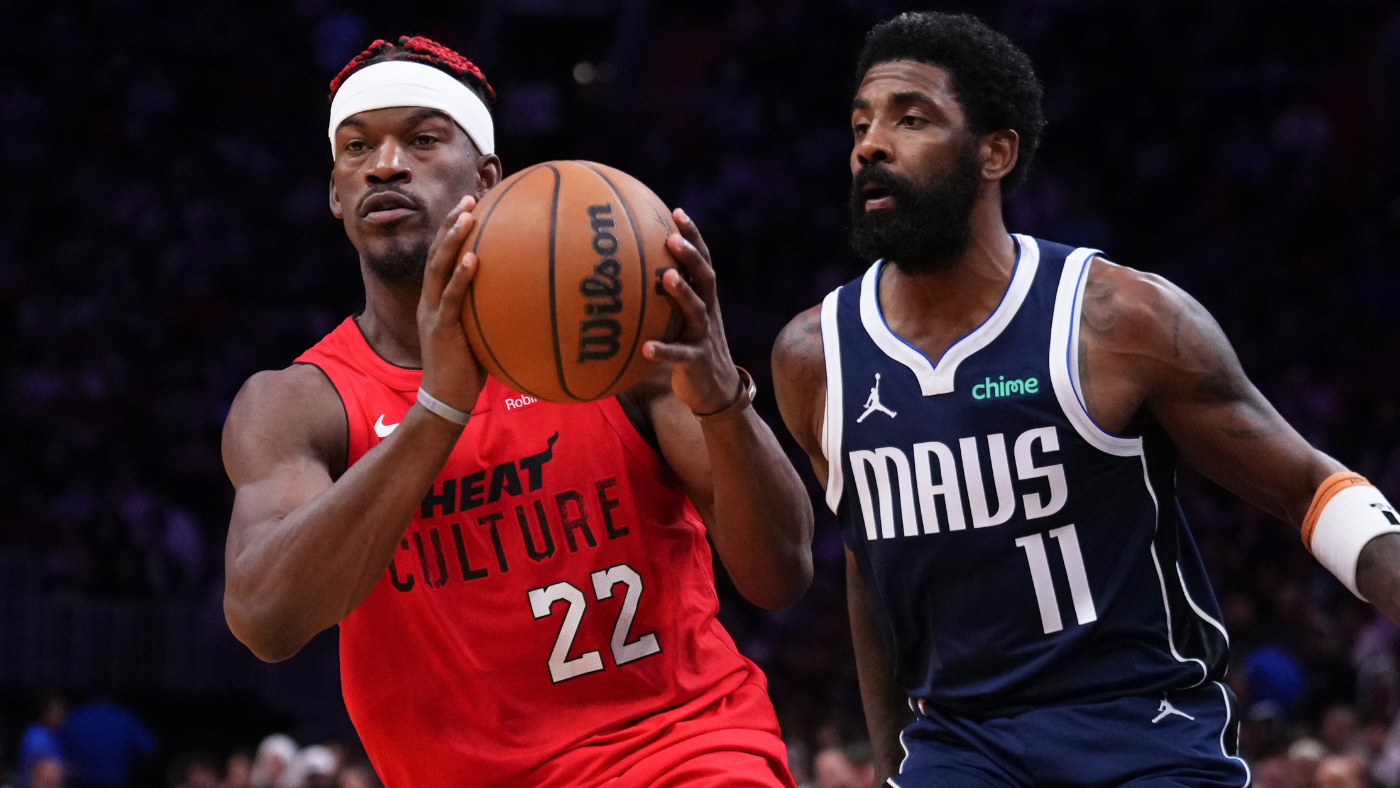
In 2020-21, Los Angeles had a +0.4 net rating when Davis was on the court with either Andre Drummond or Montrezl Harrell and a +11.9 net rating in the rest of his minutes, per Cleaning The Glass. In 2021-22, after bringing back Howard and signing DeAndre Jordan, it had a -8.0 net rating when Davis was on the court with either of them and a -1.8 net rating in the rest of his minutes. (Adding Russell Westbrook at the same time as the veteran bigs didn’t help the spacing issue.)
Davis has played virtually no power forward since then. And when asked about trying two-big lineups last month, Lakers coach JJ Redick said it was simply “not a good fit.”
How will Anthony Davis fit with the Mavericks?
For Redick, playing Davis at the 4 would have meant slotting him next to Jaxson Hayes or Christian Koloko on a team that didn’t generate enough 3s as is. The personnel is different in Dallas, and Harrison seems to believe there is a model that it can follow.
“I think if you look at the Cleveland Cavaliers, that’s what you’re going to see,” Harrison told the Dallas Morning News.
The 40-9 Cavaliers represent the best-case scenario for the Davis-at-the-4 experiment. This season, they have been elite at both ends with big men Evan Mobley and Jarrett Allen sharing the floor. Some of this is due to Mobley’s improvement as a playmaker and a shooter, but some of it is a product of their offense.
New coach Kenny Atkinson implemented a system that initially confused his own players, but once they got the hang of it, it has consistently confused their opponents. Cleveland creates space not only with shooting, but with timely cuts. Given how skilled he is, it is not difficult to imagine Davis thriving in that sort of environment. Lively has shown an advanced ability to make reads, and the way Gafford has been playing lately, I hesitate to doubt him.
Mavs fans for life? After Luka Doncic trade, not necessarily: ‘It’s just such a massive betrayal’
James Herbert
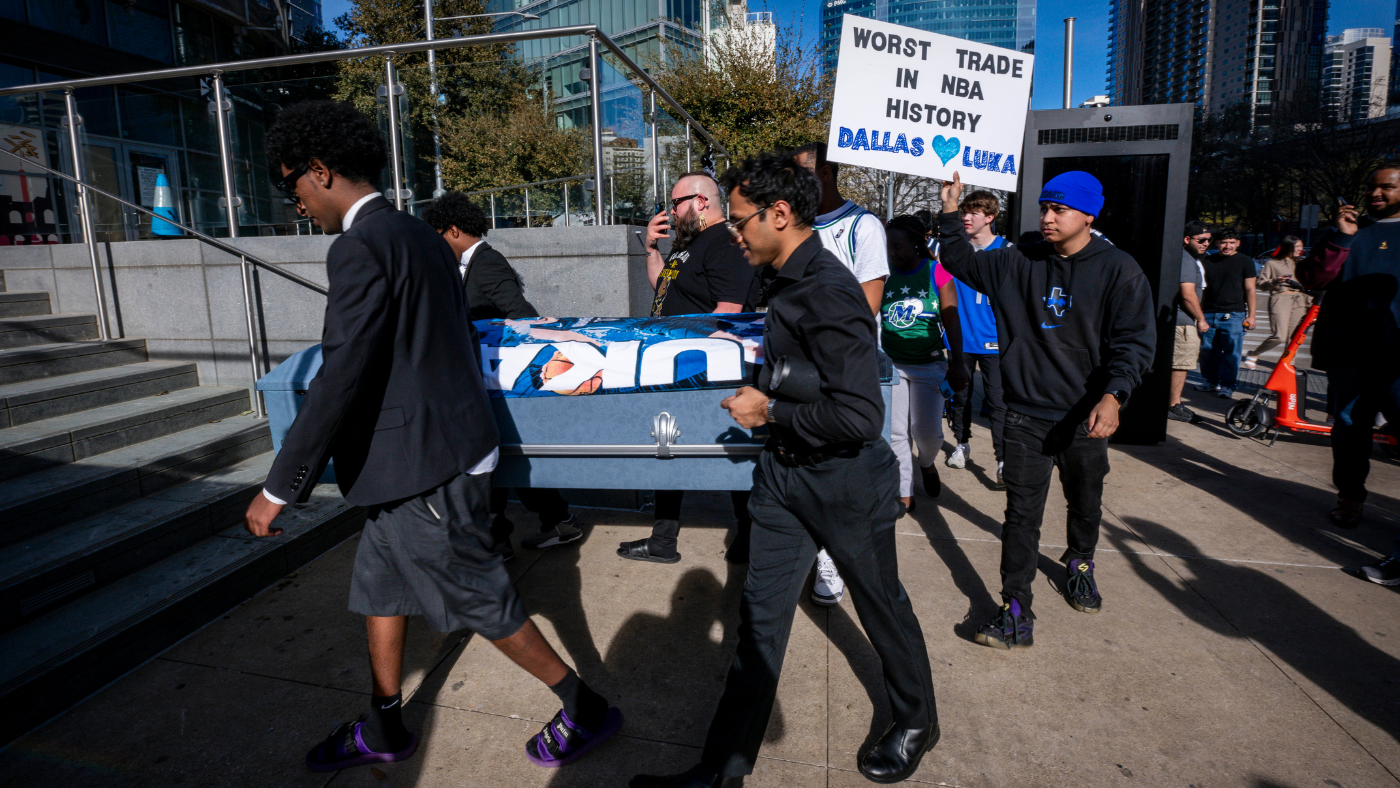
The Cavs, however, had a full training camp to install their offense. If the Mavs are going to completely change their identity, they have to do it on the fly. They’ve spent the last few years building a team around Luka Doncic. Naturally, their players are accustomed to playing mostly conventional pick-and-roll basketball.
Beyond that, playing Davis at power forward presumably means starting P.J. Washington at small forward, which likely isn’t his best spot, and that’s just one of the many ripple effects. Coach Jason Kidd has a whole bunch of rotation-caliber wings (including Max Christie, who arrived with Davis in the trade) at his disposal, but there’s a dearth of ball handlers. It will not be easy to build a rotation that keeps enough shooting on the floor and doesn’t put an enormous burden on Kyrie Irving to create in the halfcourt.
Playing Davis at the 4 should make Dallas formidable defensively, but I’d be skeptical about the other end of the floor, at least in the short-term.
If everybody could do what Cleveland is doing, two-big lineups would be much more popular.


